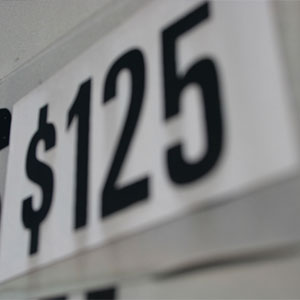This post may contain affiliate links. We may earn money or products from the highlighted keywords or companies or banners mentioned in this post.
January 29, 2015 By: Ruthanne Terrero
 I recently attended a seminar on “Pricing Your Product” and one of the more interesting takeaways was that it’s not wise to throw a lot of “freebies” into a package that the client isn’t going to use.
I recently attended a seminar on “Pricing Your Product” and one of the more interesting takeaways was that it’s not wise to throw a lot of “freebies” into a package that the client isn’t going to use.
“Adding in more stuff isn’t the same as adding more value,” said the moderator of the discussion, who added that most customers know that nothing is really free and that they’re going to end up paying for everything you’re giving them, even if they haven’t asked for it.
He divided product into four categories: the core product, solid add-ons, marginal add-ons and negative add-ons. Negative add-ons irritate people, he said, because they feel they’re being forced to pay for something they don’t want.
How does this apply to what you provide to your clients? When you write up their final trip documents, do you fill their itineraries with so much content that you’ve blindly copied and pasted from so many supplier websites that they don’t even want to read through it? Instead, keep it simple. Be clear and concise about the valuable solid add-ons on their itineraries that are possible because of your industry relationships. Speak of only those services your client will use; don’t provide kid-friendly information on a hotel that you’re sending a honeymoon couple to.
At the end of the day, throwing more “stuff” into your packaging dilutes everything you’re about. Instead, use solid add-ons to upsell, not to appease a customer who doesn’t want to pay for what your products and services are worth.
Another “no-no” is to start out with a basic rack-rate pricing quote that’s followed by the words, “before discounting.” The moderator of the seminar I attended said that’s become a norm for many companies that are afraid of losing customers; it is also the kiss of death if you ever want your pricing model to become a solid base from which you build your business.
“Are you pricing your products and services merely to survive or to make money?” our moderator asked attendees. He suggested taking a look at your business to determine how many of your clients are getting an automatic discount from you. If you’re in the 70 to 80 percent range, you’re in trouble.
On a final personal note, don’t promote something that’s available to everyone as if it’s something only you can provide. Case in point: I rented a car recently from a major rental firm and the woman who did the paperwork kept telling us she was giving us a nice car “because she liked us.” She said it about seven times. I had thought that car rental companies make it a policy to rent people nice cars, but I might have been overreaching. At the end of the day she sounded ridiculous and I wondered how she survived as a manager for such a well-known travel supplier.
The bottom line when it comes to pricing is simple: Have a logical story to tell to justify the fees you are charging. Practice it and don’t be shy to use it when a customer tries to haggle with you. Charge what you are worth.
What do you think of this $type?











